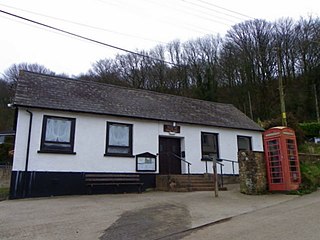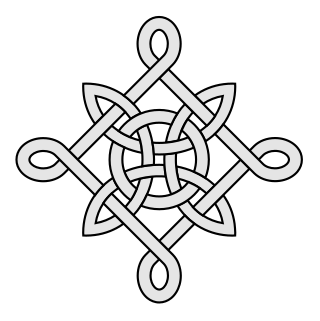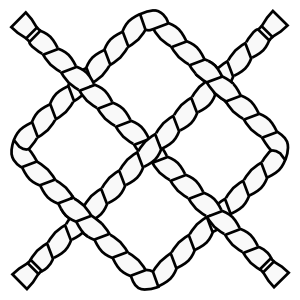
Baron Hastings is a title that has been created three times. The first creation was in the Peerage of England in 1290, and is extant. The second creation was in the Peerage of England in 1299, and became extinct on the death of the first holder in c. 1314. The third creation was in the Peerage of England in 1461, and has been in abeyance since 1960.

Baron Hungerford is a title in the Peerage of England. It was created on 7 January 1426 for Walter Hungerford, who was summoned to parliament, had been Member of Parliament, Speaker of the House and invested as Knight of the Order of the Garter before and was made Lord High Treasurer one year before he became a peer. The man who would later succeed as third baron was created Baron de Moleyns on 13 January 1445 by writ of summons; both titles merged when he succeeded as Baron Hungerford in 1459. The third baron was attainted and the peerage forfeit in 1461. This attainder was reversed in 1485 for the then 4th baroness of Hungerford, and so it came into the Hastings family of Earls of Huntingdon until 1789, when it came into the Rawdon(-Hastings) family of the Marquesses of Hastings until 1868 when it fell into abeyance. This abeyance was terminated three years later for a member of the Abney-Hastings family and an Earl of Loudoun. In 1920 it again fell into abeyance, which was terminated one year later for the Philipps family of the Viscounts of St Davids where it has remained since.

Walter Hungerford, 1st Baron Hungerford was an English knight and landowner, from 1400 to 1414 a Member of the House of Commons, of which he became Speaker, then was an Admiral and peer.
Hastings East was a federal electoral district represented in the House of Commons of Canada from 1867 to 1925. It was located in the province of Ontario. It was created by the British North America Act of 1867 which divided the County of Hastings into three ridings: Hastings East, Hastings West, and Hastings North.
Hastings South was a federal electoral district represented in the House of Commons of Canada from 1925 to 1968. It was located in the province of Ontario. This riding was created in 1924 from parts of Hastings East and Hastings West ridings.
Hastings was a federal electoral district represented in the House of Commons of Canada from 1968 to 1979. It was located in the province of Ontario. This riding was created in 1966 from parts of Hastings South and Hastings—Frontenac ridings.

Peter Courtenay was Bishop of Exeter (1478-87) and Bishop of Winchester (1487-92), and also had a successful political career during the tumultuous years of the Wars of the Roses.

Sampford Peverell is a village and civil parish in Mid-Devon, England. An old Saxon settlement, it was called Sanforda in the 1086 Doomsday Book. Its current name reflects its inclusion in the Honour of Peverel, the lands of William Peverel and his family. His great-grandson, Hugh Peverell, is buried in the village church of St John the Baptist. The parish is surrounded, clockwise from the north, by the parishes of Hockworthy, Holcombe Rogus, Burlescombe, Halberton and Uplowman.
Charles Seymour, 2nd Baron Seymour of Trowbridge was the son of Francis Seymour, 1st Baron Seymour of Trowbridge, whom he succeeded in the barony in 1664. Francis had been a younger brother of William Seymour, 2nd Duke of Somerset.

An Alphyn, also known as awfyn or alfin in older writings, is a rare heraldic creature. It is much like a heraldic tyger, but stockier and with tufts of hair covering its body, and also has a thick mane and long thin tongue. Another notable characteristic is its knotted tail, reminiscent of Celtic design and similar to that of the griffin. Sometimes it is depicted as having an eagle's or dragon's talons on its forelegs, other times they are cloven, like a goat's. Occasionally all four feet are depicted as having the claws of a lion. In English heraldry, the Alphyn was used as a heraldic badge of the Lords de la Warr, and also appeared on the guidon held by the knight in the Milleflour Tapestry in Somerset.

The Bowen knot is not a true knot, but is rather a heraldic knot, sometimes used as a heraldic charge. It is named after the Welshman James Bowen and is also called true lover’s knot. It consists of a rope in the form of a continuous loop laid out as an upright square shape with loops at each of the four corners. Since the rope is not actually knotted, it would in topological terms be considered an unknot.

The Hinckaert knot, a type of decorative unknot, is a heraldic knot used primarily in Dutch heraldry. It is most notable for its appearance on the Hinckaert family heraldic badge, where a semi-angular form is used as canting arms, a common practice with heraldic badges.

The Wake knot or Ormond knot is an English heraldic knot used historically as an heraldic badge by the Wake family, lords of the manor of Bourne in Lincolnshire and also by the Butler family, Earls of Ormond.
The Dacre knot, a type of decorative unknot, is a heraldic knot used primarily in English heraldry. It is most notable for its appearance on the Dacre family heraldic badge, where its two lower dexter loops entwine a scallop, and its two lower sinister loops entwine a log.

Robert Hungerford, 2nd Baron Hungerford (1409–1459) was an English landowner. The second but eldest surviving son of Walter Hungerford, 1st Baron Hungerford, he served in the Hundred Years' War, and was summoned to parliament as Baron Hungerford from 5 September 1450 to 26 May 1455. He died 14 May 1459, and in accordance with his will was buried in Salisbury Cathedral. He was succeeded by his son Robert Hungerford, 3rd Baron Hungerford (1431–1464).

Henry Weysford Charles Plantagenet Rawdon-Hastings, 4th Marquess of Hastings and 9th Earl of Loudoun, styled Lord Henry Rawdon-Hastings from birth until 1851, was a British peer. He was also, starting from most senior barony, 21st Baron Grey of Ruthyn, 20th Baron Botreaux, 19th Baron Hungerford, and 17th Baron Hastings.

Blackborough is a hamlet and former manor in the parish of Kentisbeare, Devon, England. It is situated within the Mid Devon district. The nearest substantial town is Cullompton, approximately 4.7 miles (7.6 km) to the south-west. Within Blackborough are situated the large mansion of Blackborough House also notable are Hayne Farm and the Old Smithy. The former neo-Gothic Early English style parish church of All Saints, built in 1838 by George Wyndham, 4th Earl of Egremont, lord of the manor, who also built Blackborough House was demolished in the 1990s, having become structurally unsafe. The churchyard however is still maintained and the ecclesiastical parish and parochial church council still exist.

The Lacy or de Lacy knot is a decorative heraldic knot, the badge of the de Lacy family. It features in the crest of the borough of Burnley and heraldic badge of Kirklees.

The Harrington knot is a decorative heraldic knot, the badge of the Harrington family. It is in essence identical to the fret.















